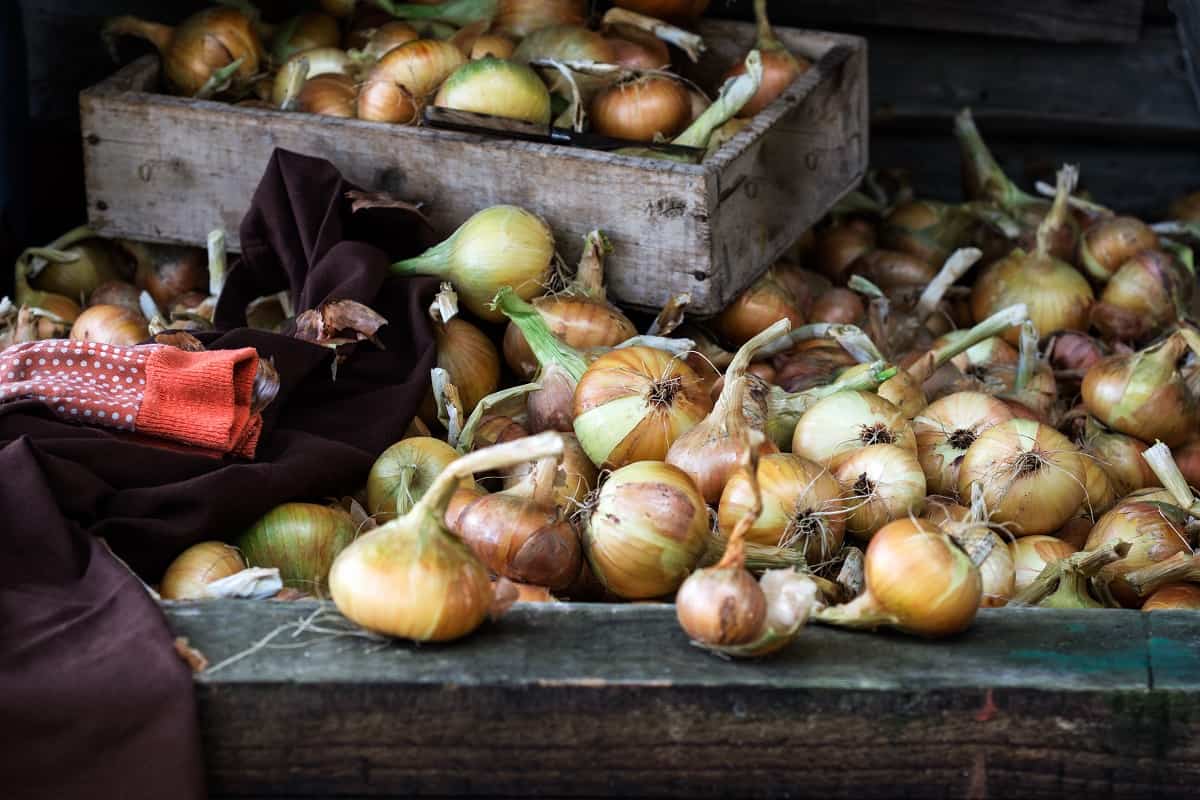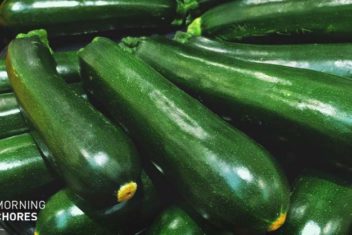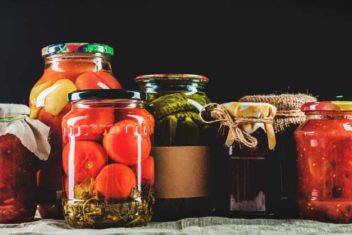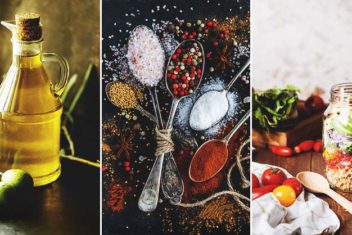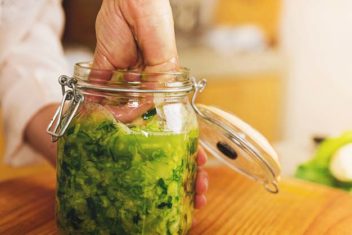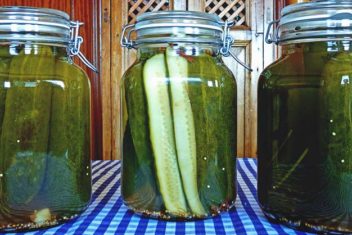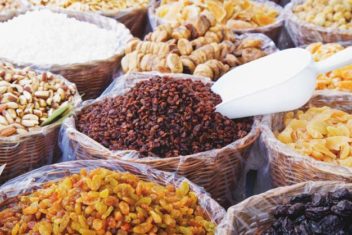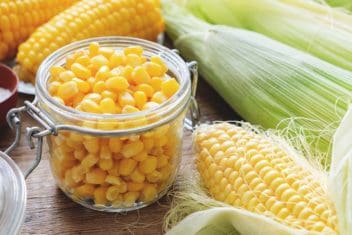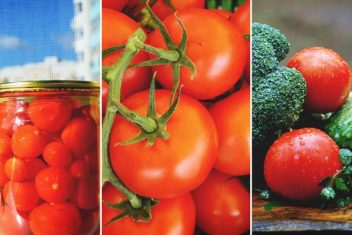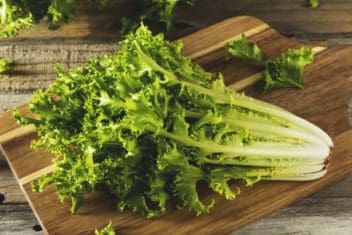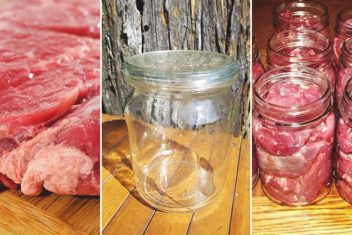This year, we were lucky enough to grow almost all of the onions we needed for the entire season in our garden.
Unfortunately, we got a little overzealous with our canning, so most of our onions now exist in pickled form. Nothing wrong with that – there are plenty of ways to use pickled onions, including on sandwiches, stir-fries, and more (they also taste great right out of the jar!).
You don’t have to rely on a canner to store onions for the long term, however. There are plenty of ways you can store onions. Here are some tips for storing onions so that you can enjoy your tasty homegrown produce all year long.
The Best Kinds of Onions to Grow for Long Term Storage
Technically, you can grow any kind of onion for long-term storage, but some will hold up better than others. If you’re growing onions in your garden or simply stocking up at the farmer’s market, you’ll have to look for onions with thicker outer skins. Those with higher sulfur content and lower water content are also good to keep an eye out for.
Here’s a tip – if you’re cutting up an onion and it brings tears to your eyes, chances are, it will be a good variety for storing.
These are some of the best yellow onion varieties for storage:
- Bridger
- Cortland
- Copra
- Pontiac
- Patterson
- Talon
- Yellow Sweet Spanish
- Yellow Globe (both heirloom and hybrid varieties will work)
For red onions, consider types such as:
- Brunswick
- Red Creole
- Red Wind
- Red Bull
Finally, for white onions, you might grow varieties such as:
- Southport White Globe
- White Sweet Spanish
- Stuttgarter
Choosing which onion to grow for storage will depend on your preferences in the kitchen and where you live. Most onions that are well-suited for storage are long-day varieties, best grown in northern states. The best solution? Consider growing a mixture of these onion types (try picking one each from the white, red, and yellow categories) and then you’ll have plenty of onions to experiment with.
Remember, the more pungent the onion, the longer it will last. Milder onions will only last, at best, for 1-3 months. Pungent onions generally last for months and months.
Should I Refrigerate Onions?
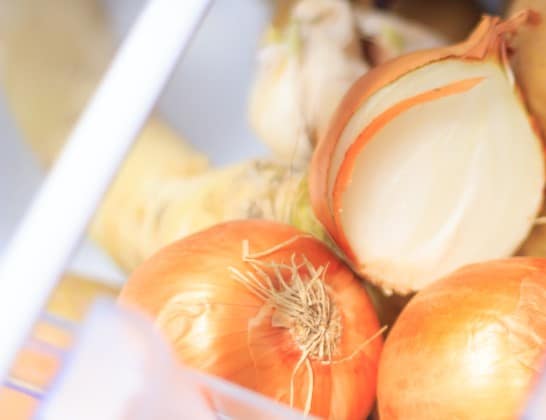
Unless you have already cooked, chopped, or sliced up your onions, avoid refrigerating them. Similarly, you should not store onions in plastic bags. This can restrict air movement, which reduces storage life.
However, if you’ve already cut up or cooked your onions, feel free to pop them in the refrigerator. Put them in a sealed container so they don’t stink up the rest of the food you have in the fridge and use them up within 7 days.
How to Store Onions for Long Term Use
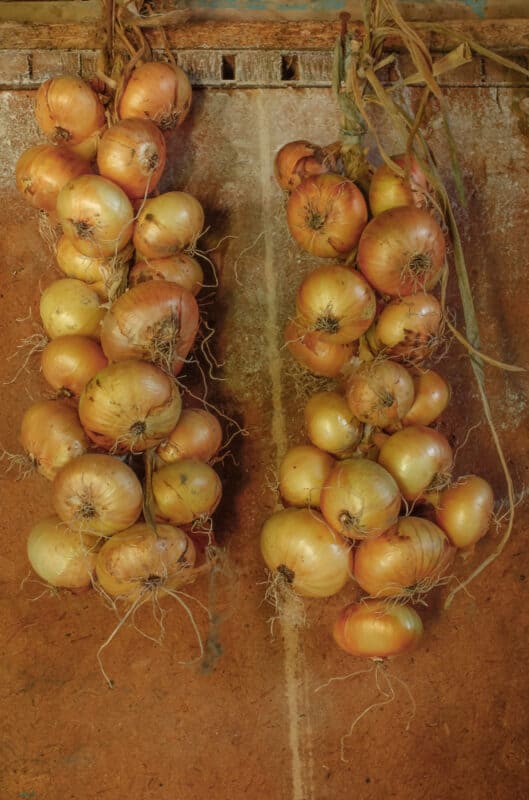
Here are several tips for storing onions for later use. When stored correctly, some kinds of onions can last for several months or longer.
1. Store in the Pantry, Cellar, Basement, or Garage
If you plan on storing onions without relying on any cooling or preservation techniques (like through canning or freezing), you will need to cure them first. This can be done for onions that will be stored in a root cellar, too – something I’ll tackle in the next section.
To cure your onions, you will need to start by harvesting them (or buying them at the store or farmer’s market, if that’s what you have planned). Wait to harvest until the onion tops have turned brown and fallen over. Pull or dig them out on a dry day.
Then, put the entire plant, leaves, bulb, and all, in a cool, dry location. You can hang them in bunches or spread them on a rack. Whatever you choose, just make sure they have good air circulation.
Let the onions dry for 2-3 weeks. The necks and tops will feel dry to the touch and the skin will feel papery.
If you plan on braiding your onions to store them (something you can do if you’re short on space and want to make sure your onions get good ventilation while in storage), you should leave the leaves intact. Trim them to about 1-inch long if you plan on storing the onions loose. Just don’t remove them entirely if you want to be able to store them.
After curing the onions, they are ready to be stored. Just stash them somewhere in which they’ll be cool and dark – ideally between 32-40°F. If it’s a little warmer, that’s okay, but the storage life will be reduced. Air circulation is key, as this will reduce the likelihood of your onions sprouting.
2. Try a Root Cellar
You can also store onions in a root cellar. A root cellar offers ideal conditions, as specified above.
If you store in this manner, again, be sure to cure. However, avoid storing your onions near potatoes. The onions will cause the potatoes to spoil faster, and vice versa – it’s just a bad pairing! Keep the onions away from other fruits and vegetables in your root cellar that might absorb their pungent flavors, too.
A good rule of thumb is to stash your onions in a wooden box with slats or a mesh bag (some people even use old pantyhose). This will help you keep your onions fresh and healthy for the long term.
3. Storing Cooked Onions
As mentioned earlier, cooked onions can be stored in the refrigerator in a sealed container. You can also stash them in the freezer where they will last for several months. They may be soggy when you thaw them, but will taste just fine in soups or stir-fries.
4. Pickling and Canning
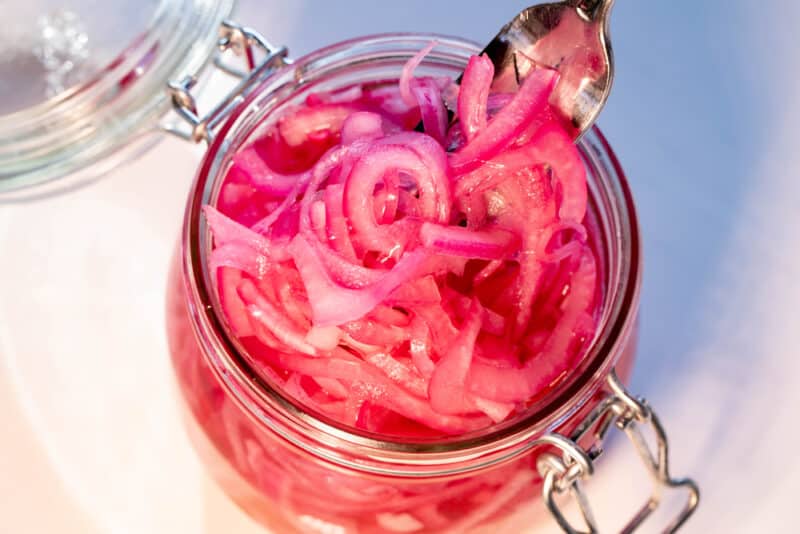
One of my favorite ways to store onions is to pickle and then can them. Pickling allows you to preserve your onions without having to rely on a pressure canner – plus, pickled onions are absolutely delicious. You can use either red wine vinegar, apple cider vinegar, or white vinegar to pickle onions in a water bath canner.
5. Freezing
I mentioned earlier that you can freeze cooked onions. You can also freeze raw onions. This will allow you to preserve onions that may not be well-suited for long-term storage in a root cellar or basement, such as smaller ones.
6. DIY Onion Powder and Salt
If you have a lot of small onions to store, consider dehydrating them to make your own powder or salt. This can not only help you save money, but it will also allow you to store onions long-term.
7. Storing Leeks/Spring Onions
Smaller onions, or even leeks or spring onions, are best stored at temperatures around 32°F and roughly 95-100% humidity. As leeks get warmer, they’ll start to decay. You can stash these kinds of onions (typically eaten for their greens as well) in jars of water to keep them fresh.
8. Storing in the Pantry or On the Counter
Of course, onions of all kinds can also be stored in the pantry or on the counter. Just keep in mind that any exposure to sunlight or warm temperatures will reduce the onions’ storage life.
Best Way to Store Often Comes Down to Onion Type
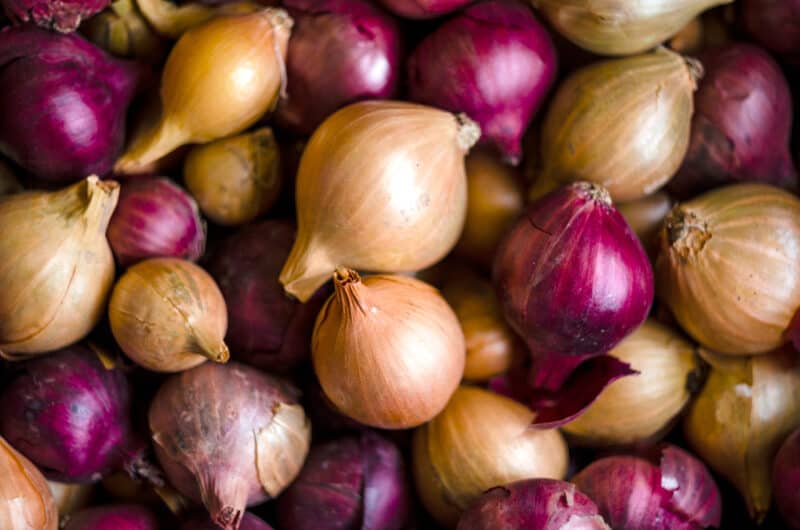
When stored correctly, most onions can last in storage without any refrigeration, cooking, or preservation for around 8 months, with some lasting a year or more.
However, you must inspect your onions regularly and use up any that are soft first. Get rid of any onions that show signs of rot or mold so they won’t affect the other onions.
Again, storing onions effectively often comes down to choosing the right variety. When you choose the right variety – and have grown your onions in the proper conditions (a very wet growing season won’t produce onions that lend well to long-term storage), you shouldn’t have any trouble hanging on to onions for months on end.
Now – time for some French onion soup?
